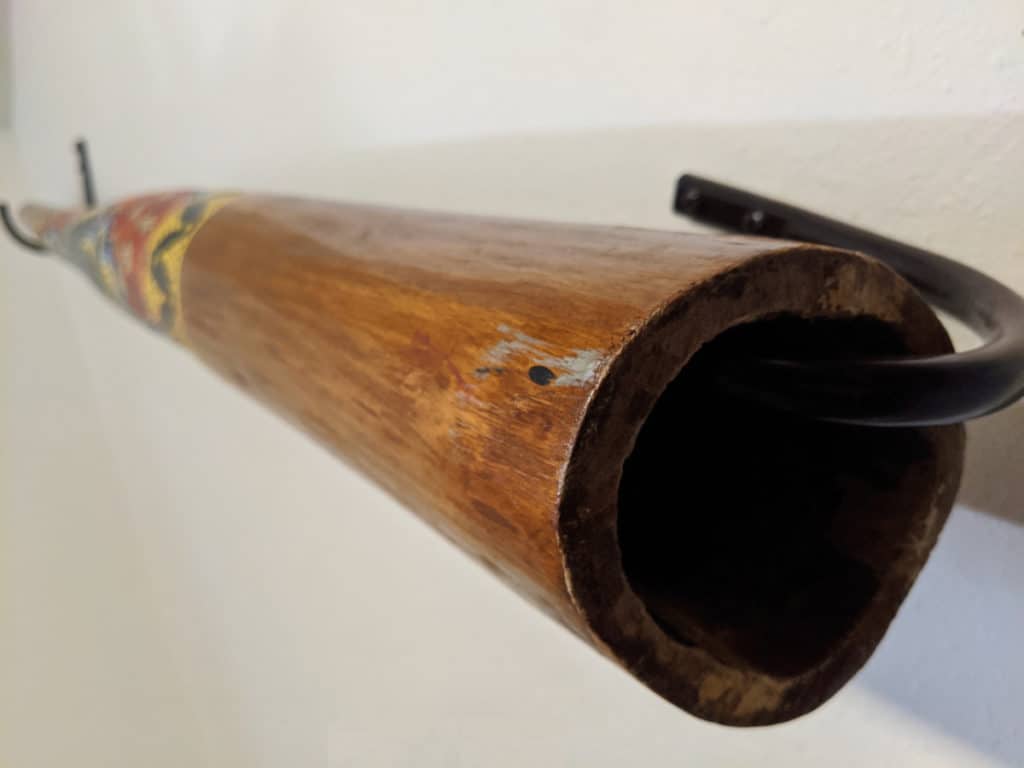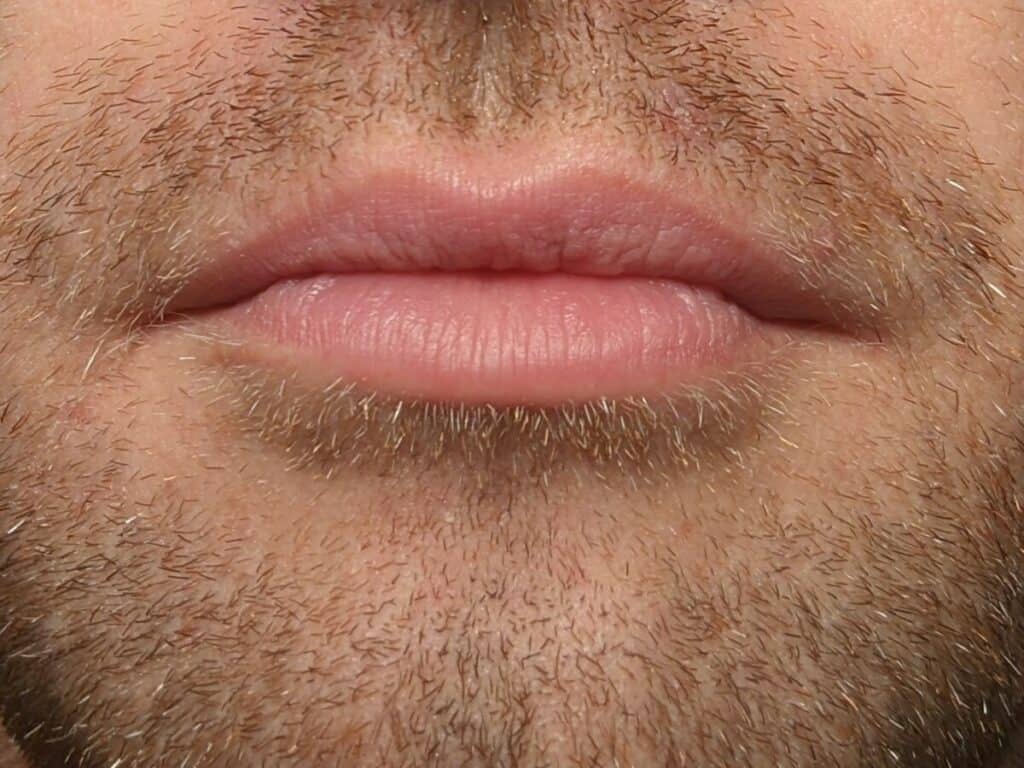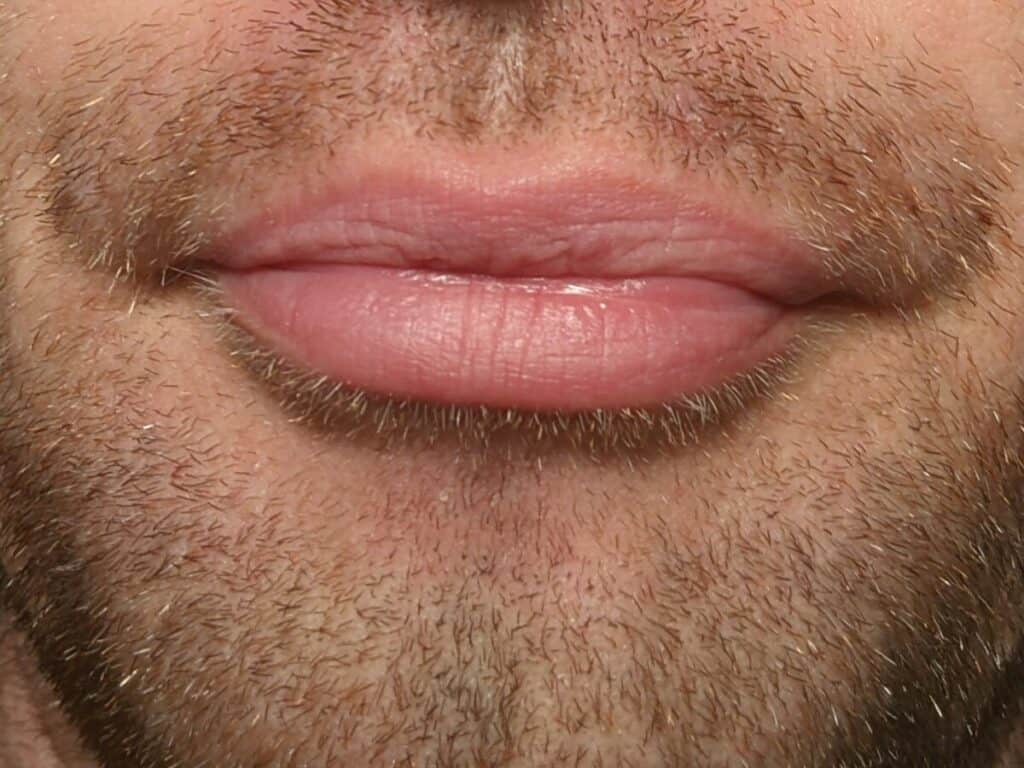This post contains affiliate links. We earn commissions if you purchase products from retailers after clicking on a link from our site. As an Amazon Associate, we earn from qualifying purchases.
Hello friends–if you are fortunate, you may have been introduced to the magical instrument, the didgeridoo.
The Aborigines in Australia are to thank for this wonderful instrument. The instrument was made by finding parts of the eucalyptus tree that had been hollowed out by termites and treating the wood so it would last. The name Didgeridoo is not the original name of the instrument but is referred to as a Yidaki, and other names depending on the region.
Would you like to learn to play it? You’ve come to the right place.
How To Play the Didgeridoo
First off, I made a video detailing how to play the didgeridoo that walks through all these steps–but if you’re like me, sometimes you just want to read instructions rather than watch a video, so I’ve put all the information you need to know, here.

By the way, looking for recording equipment and musical instruments? Check out Sweetwater.com for microphones, monitors, audio interface or any other recording gear that you could ever need. (Affiliate Link)
Selecting Your Didgeridoo
The first thing you need is to get a didgeridoo. I’m not going to spend a lot of time on this since this article is about how to play the didgeridoo. Just as a note, in principle, a didgeridoo is simply a tube anywhere from 3-6 feet long with a mouthpiece that’s a size that you can buzz your lips into. (around 20-25mm or 3/4 to 1 inches).
This means that a simple PVC pipe can suffice. If you use 3/4 inch pipe, you can use 3/4 inch connectors as a mouthpiece to get started.
Otherwise, you can pick up an inexpensive didgeridoo here on Amazon that’s been nicely painted. In my opinion, this is a fantastic starting point for you on your journey. You can spend thousands of dollars on custom didgeridoos but a cheap one is a great way to get a hold of the basics.
Find Your Drone
The very first step to playing the didgeridoo is learning how to make that characteristic drone sound.
Here’s an example of the didgeridoo drone:
Learn To Buzz
To make this sound, you can form a loose embouchure (don’t be scared, it’s not too bad) with your lips so that the corners of your mouth are slightly tucked.
Here are my lips close up in a normal position without any embouchure.

Here are my lips close up with the corners of my mouth slightly tucked. This slight tuck is what gives your lips support as you buzz the center of your lips loosely.
To get into this next shape, you can try saying the sound ee, and then the sound eww, maintaining the natural tuck of your lips on the edges. It doesn’t need to be extreme.

It doesn’t need to be perfect—and you’re just getting started. If you are wanting to be a didgeridoo pro, you should really get some mentorship with a professional didgeridoo player–but if you’re like me and just want to enjoy the instrument, you don’t have to overthink it.
Example Of A Loose Buzz
Here’s a GIF of my lips close up in slow motion as I buzz. This is about what your lips should look like:

Buzz Into the Didgeridoo
The next step is to take this new buzz that you just learned how to do and then buzz into the instrument. It sounds simple, but if you’re just getting started it can feel frustratingly tricky.
The concept is simple, you need to put your lips into the mouthpiece of the didgeridoo (the thin end), and make that embouchure you learned about in the previous section, and then loosely buzz into the instrument.

If it’s your first time, it might sound like elephants farting at first–but keep practicing. Here are some tips if you are having issues:
- Make sure your lips are making a seal against the mouthpiece. If they are not, you are not going to be able to get this to work. You can try rotating the didgeridoo (as they are made of wood often and are uneven), to see if you can find the ideal spot where the seal is the best
- If the mouthpiece is too big, you may find you have to put out a lot of air to make the drone and you can only get it to last a second. You can shrink your mouthpiece by using beeswax to wrap around the edge of the mouthpiece to shrink the diameter.
- Try changing the tightness of your buzz. If you’re trying with a low buzz, try again with a higher buzz. Your buzz will have to be different for every didgeridoo, so you may have to play around with it.
- If you are experimenting with a PVC didge, try adjusting the length of the didgeridoo. You’ll find if it’s too short it’s difficult to get enough backpressure to make a sound. If it’s too long you may have trouble as well.
Lastly, if none of these tips worked, I actually made a video all about troubleshooting your drone that should help:
Shape Your Sound
It’s important to get the drone first before proceeding. If you aren’t able to hold a drone for more than 3 seconds, make sure to go to the previous section and work that out.
Now that you are making a drone sound, you have opened up limitless opportunities. The didgeridoo can make a huge number of sounds and you’re only limited by your imagination.
Let’s learn a few fundamentals:
Tonguing
Tonguing may sound awkward or technical, but I promise, it’s as easy as talking. Really.
If you can say, “Tip Top Tango” you can tongue on the didgeridoo.
Tonguing is the process of abruptly blocking and unblocking the flow of air into the didgeridoo, and it sounds like this:
You can “tongue” on the didgeridoo by simply making that “T” sound as if you were saying “Top” while you are buzzing into the instrument.
Of course, you don’t have to stop there, you can say Tuh, you can say Guh, Duh, and so on… and they all have different sounds.
You can use tonguing to make rhythms! You can now tongue at the beat of a song. “1…2…3…4…” This is fundamental to many sounds and rhythms on the didgeridoo.
Vowels
The didgeridoo’s sound is impacted by the shape of your mouth.
As you drone, try and make the vowel sounds: A…E…I…O…U. The Didgeridoo will modulate along with the change in the shape of your mouth.
Here’s an example:
Using Your Diaphragm
The diaphragm is an essential part of interesting Didgeridoo playing. You can place emphasis on parts of your playing with that deep belly laugh that you can make.
Find Your Belly Laugh
Place your hand on your stomach right below your sternum and try to use your diaphragm to force out a HAH sound. As if you just heard an extremely funny joke and a laugh is exploding out of your stomach.
When you can feel a constricting of your diaphragm then you are getting the right idea.
Use Your Diaphragm To Make Sounds
Now, while you have your drone in the didgeridoo going, use your diaphragm to push out a HEE, or a HOH sound. You should be able to hear a dramatic emphasis. This is a super cool technique to diversify your playing.
Here’s an example of some diaphragm emphasis:
Circular Breathing
Circular breathing is probably one of the trickiest parts of learning the didgeridoo. It’s completely a non-intuitive thing to do with your body. Kind of like a golf swing–once you learn it, it’s fine, but before that, it feels super super difficult and weird.
The concept of circular breathing is that you are blowing air stored in your cheeks and throat through your mouth while you are simultaneously breathing in through your nose.
You aren’t breathing in and out at the same time–that’s impossible, but you are using your cheeks and throat as a sort of airbag that you are squeezing out while you breathe in through your nose.
If this doesn’t make sense, look at a bagpipe player. They have this bag that they have under their arm that they are squeezing. The air coming out of this bag is actually what’s making the sound. The player is breathing in through their nose and breathing out into the bag to keep the bag constantly full.

That’s how bagpipes can maintain a consistent drone throughout an entire song.
Learning to Circular Breathe
So now that we understand the concept, let’s figure out how to do it.
There are lots of methods and exercises. I’ll give you a few:
Water Squirting
- Put some water in your mouth and hold it there and don’t swallow.
- Hold the water in there for 60 seconds while breathing through your nose
- Now, use your cheeks to spit out the water in an appropriate place (like outside, or in the sink). Focus on not using air from your lungs to spit out the air
- Repeat this exercise, but try changing the stream of water being pushed out to be as small as possible… try to spout water out for 5 seconds.
- Now, repeat the exercise with a slow water spout and try to breathe in through your nose while the water is going out of your mouth.
This exercise helps show you that you can independentize your mouth and your nose. This is the exact reflux of how it works. After you’ve got this down, repeat the exercise except instead of using water, use air and push out the air from your mouth and breathe in through your nose at the same time.
Straw Method
- Put a straw in a glass of water
- Take a deep breath filling up your cheeks like a chipmunk
- Blow the bubbles through the straw into the glass of water. The straw will limit the air stream so you should have several seconds of bubbles
- Try to breathe in while the bubbles are exiting.
Rhythms
Getting all this down can take a few hours. So if you feel frustrated that you got to the end of this post and you still don’t know how to play, don’t worry, just give yourself 3-10 hours and you’ll get it. These are tricky techniques! No doubt.
Now, onto Rhythms.
I made a YouTube video with several rhythm ideas if you’re interested.
To get you started, you can try simply putting a metronome on at 80 BPM, and trying to make the following sounds with the didgeridoo on every beat
| Beat | 1 | 2 | 3 | 4 |
|---|---|---|---|---|
| Rhythm #1 | Hoh (diaphragm out) | Hee (breathe in) | Oh | Hee (Breathe in) |
| Rhythm #2 | Doo | Wah | Hee (breathe in) | Oh |
If you want more rhythms, make sure and check out my video on the subject.
What’s Next?
This is obviously just the beginning. If you want to learn more, I highly recommend Jonny Cope’s course… you’ll learn all of this and much much more–and by the end you’ll be much more confident. Highly recommended… you can see the course here on Udemy.
